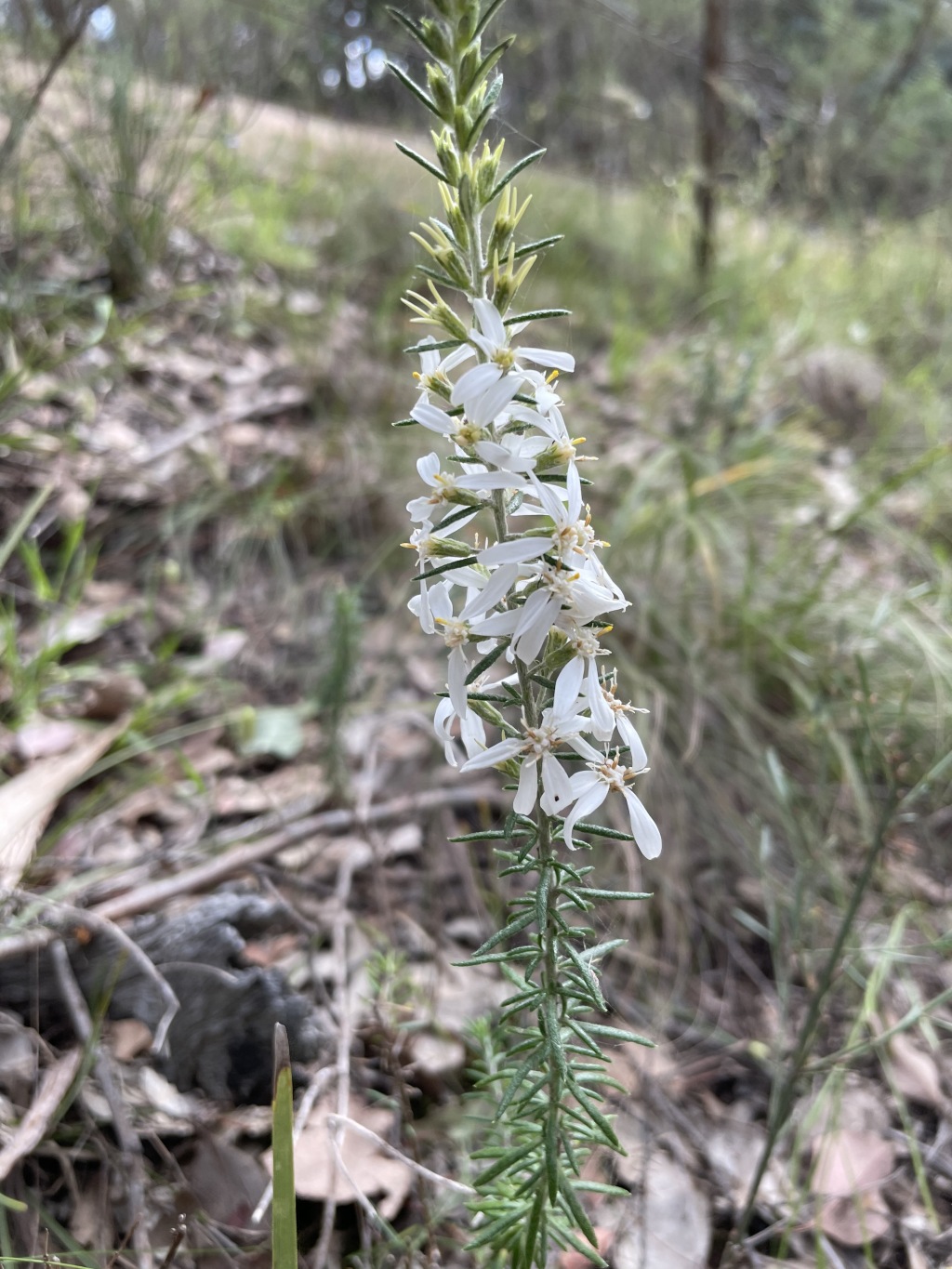Olearia ramulosa
(Labill.) Benth. Twiggy Daisy-bushVery variable shrub, 0.3–2 m high; branchlets white-cottony, setose (with setae to 1.5 mm long), or glandular, or with combinations of any or all of these conditions. Leaves alternate, subsessile, narrow-elliptic, narrow-obovate or linear (often toothed to deeply lobed on young plants), 3–15 mm long, 0.8–2.5 mm wide, green, glabrous, slightly cottony, scabrous or setose above; white- or grey-tomentose, sometimes glandular beneath, or the lower surface obscured by the revolute margins. Capitula c. 10–25 mm diam., subsessile or on slender, naked or leafy peduncles to c. 18 mm long, mostly axillary; involucre conical, 3–6 mm long; bracts 2–3-seriate, graduating, variably pubescent, glandular, or glabrous, acute or obtuse. Ray florets 2–10, white, mauve or blue, ligules 3–6 mm long; disc florets 3–13, yellow or mauve. Cypsela c. cylindric, c. 2 mm long, 6–8-ribbed, moderately to densely sericeous, sometimes glandular; pappus pale, c. 4 mm long.
LoM, MuM, Wim, GleP, Brid, VVP, VRiv, MuF, GipP, OtP, WaP, Gold, CVU, GGr, DunT, EGL, EGU, WPro, HSF, HNF, OtR, Strz, MonT, HFE, VAlp.
A complex, of which 6 varieties have been described for Victoria (Willis 1956, 1973). Since the publication of those varieties, numerous additional collections of O. ramulosa s. lat. have been made, blurring the boundaries between the published names. However, this additional collection effort has identified a distinct form from montane regions in Victoria (previously treated in VicFlora as Olearia aff. ramulosa (Omeo), see O. stricta). It is beyond the scope of this treatment to present a complete resolution to the remainder of this complex. Such a task requires examination of material from across the extensive range of the species (from South Australia to Queensland). In Victoria, with the exception of a few intermediate specimens, two broad morphological and ecological groups have be recognized: var. ramulosa from coastal areas and var. stricta from inland sites (see O. stricta subsp. stricta for note on the application of the epithet stricta). However, these two broad entities appear to break-down when specimens outside of Victoria are examined, and are now treated together in O. ramulosa var. ramulosa.
Currently, O. ramulosa var. tomentosa, a morphologically distinct form with a relatively narrow distribution is the only other variety recognised within this species.
A distinctly bristly form from the Grampians with long setose hairs on stems, leaves and bracts, and that lacks sessile or glandular hairs appears to conform to O. ramulosa var. longisetosa J.H.Willis. These long-haired plants often have relatively sparse leaves that are narrowly elliptic rather than ±linear. However, the status of this taxon remains uncertain as there is a continuum from long- to short-haired plants throughout this area, and plants with long setae are often glandular.
Walsh, N.G.; Lander, N.S. (1999). Olearia. In: Walsh, N.G.; Entwisle, T.J., Flora of Victoria Vol. 4, Cornaceae to Asteraceae, pp. 886–912. Inkata Press, Melbourne.
 Spinning
Spinning

